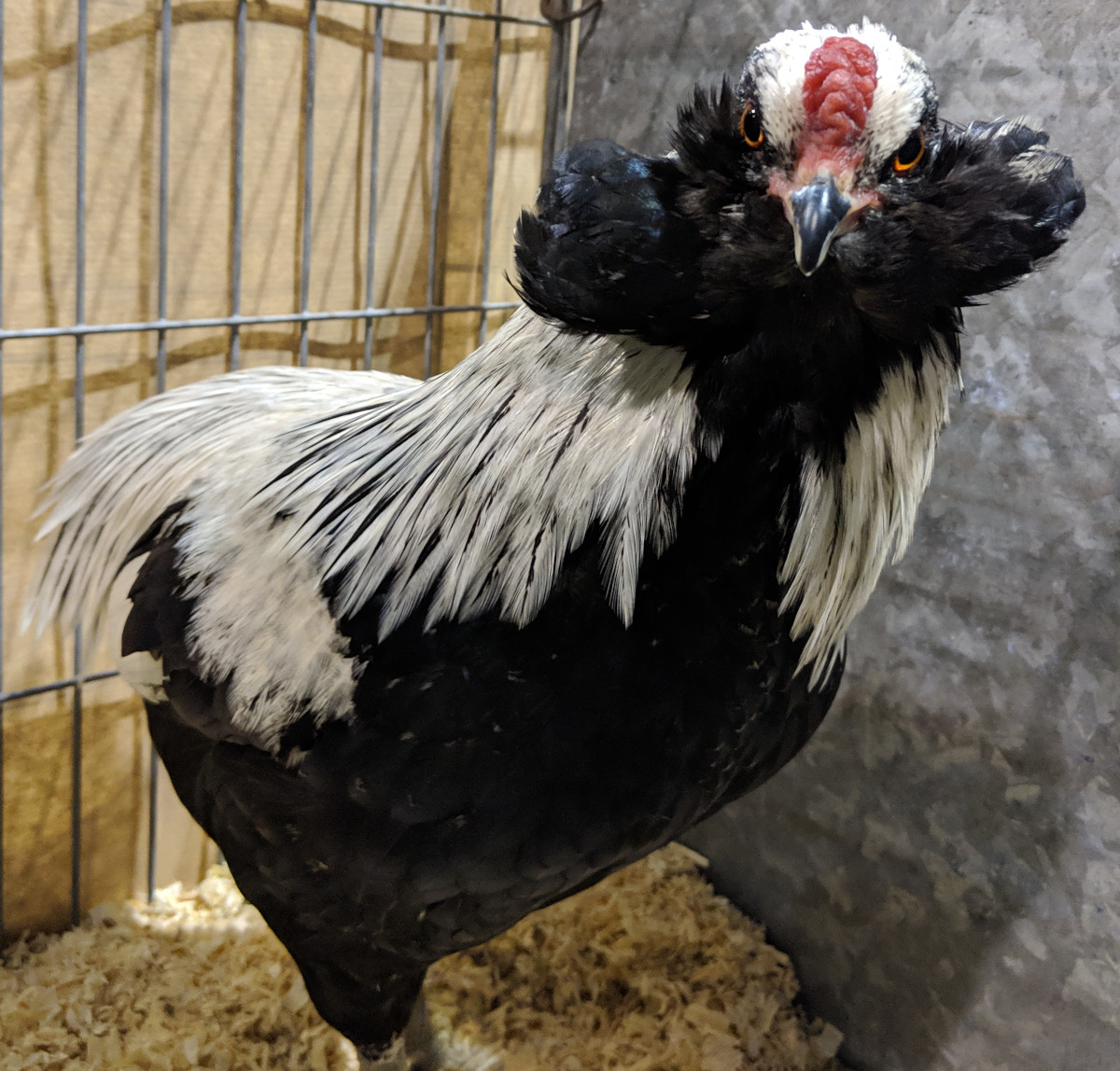
How to choose show chickens and what to look for.
Table of Contents
Winning in the show arena is about presenting a complete package and you must know a good specimen from a poor one.
Birds for showing need to be chosen a full three months before the date of the show and choose a few surplus ones.
I now go over and select my exhibition cockerels. This is done fully two months or ten weeks before show season. Each bird is weighed and placed in a separate conditioning coop.
I then choose my hens and place them in small family groups of three to five birds. You should not mix birds up that have not been reared or kept with each other for some time before or they will fight which can break feathers and cause scarring on the combs.
Below: The head, eyes, comb and wattles often bring the first looks after the shape and need to be good.
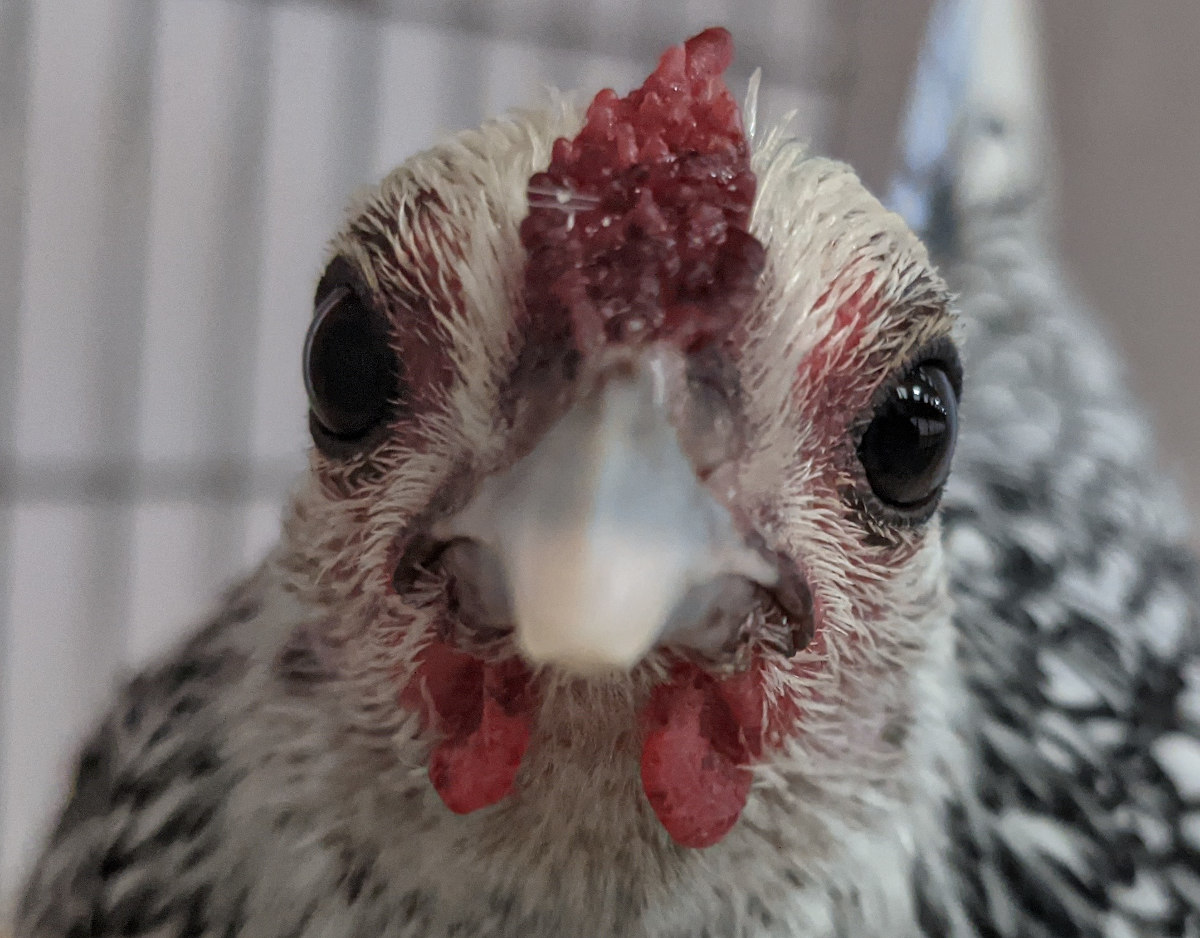
Know your terminology, a defect is a minor flaw in the birds profile that will end up with the judge marking the bird down during scoring whereas a disqualification will get the bird removed from the show.
Some tips for beginners when choosing show chickens:
Some breeds and colours are easier to show than others, my suggestion to beginners is to avoid feather legged types and start with monochromatic bantams.
Bantams are smaller, easier to transport around and eat less as well as being cheaper to feed and house. My first time out was with Silver Laced bantam Wyandottes and I did quite well. The colour and pattern is balanced and mature in most stock and they were relatively easy to find.
I have learned that most judges will work backwards by eliminating one bird at a time, first looking at the obvious faults then the less obvious. After the obvious defects are eliminated from the group, then comes the handling of the birds.
Below: If you are stuck on which birds to choose, pick one with character.
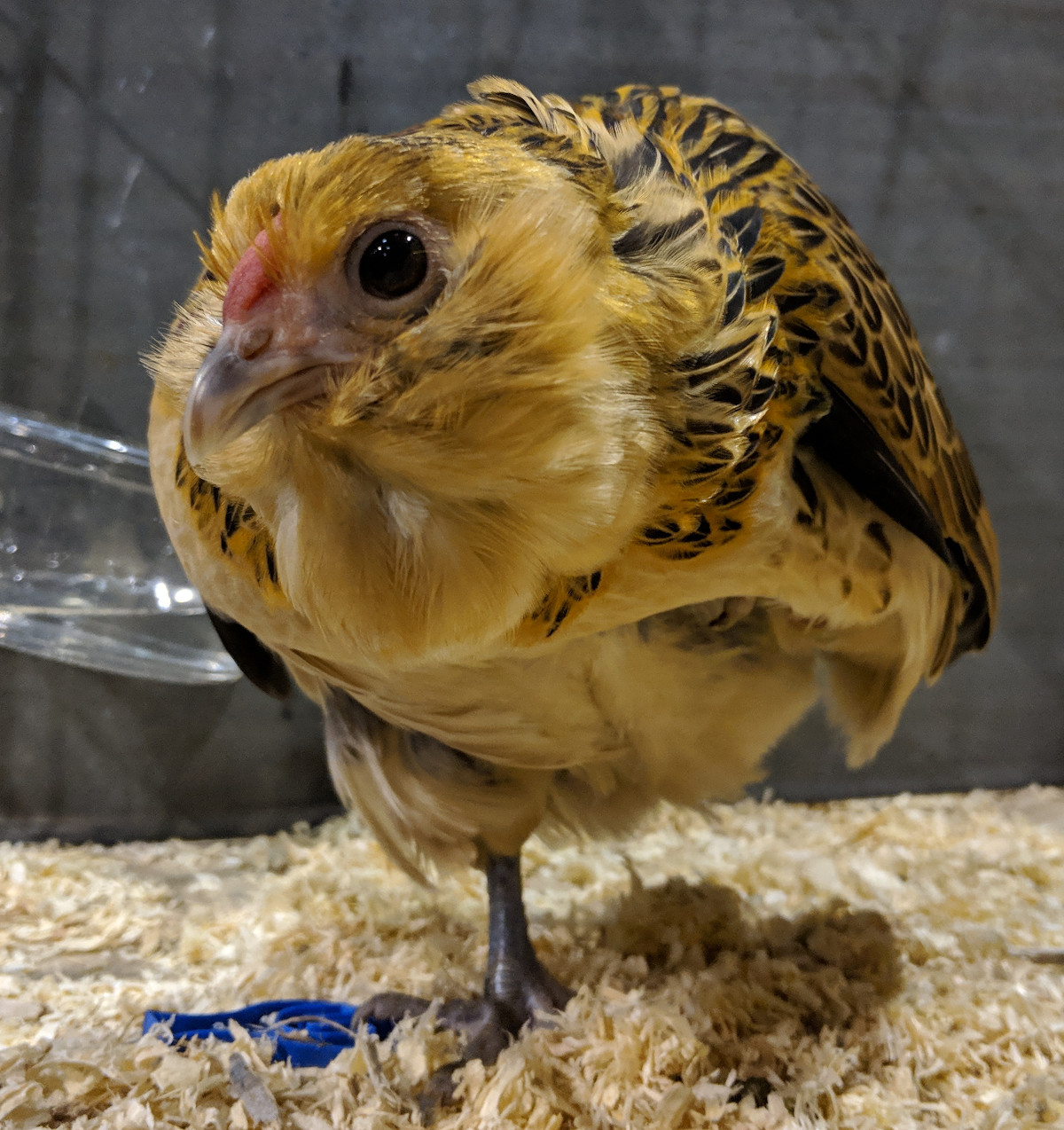
When choosing show chickens you should avoid:
- Any bird that has been ill in the last 12 months.
- Chickens that have a deformity or were hatched with splayed legs.
- Keeping cockerels together.
- Separating hens, they do better in small family groups.
- Bending or breaking the feathers.
- Don't coop too many birds together.
- Combine strangers or birds that are not acquainted, that sort of fight can ruin a show specimen.
The best chickens to choose as show birds are those that:
- Conform to the breed standards of perfection.
- Are fully feathered.
- Have not got obvious faults like twisted or wry tails.
- Are symmetrical down their centre line.
- Have taken well to their cage training and are calm and relaxed when being handled.
What makes a show rooster?
No stubs on shanks or down between the toes must appear, as many a good specimen has been "thrown out" in the show room for this disqualification, and from among the stock of old breeders too.
I go over each specimen, noticing closely if any feathers are broken. If any are found they are pulled out, as they have ample time to grow in again.
Below: A show rooster on display in a a poultry cage.
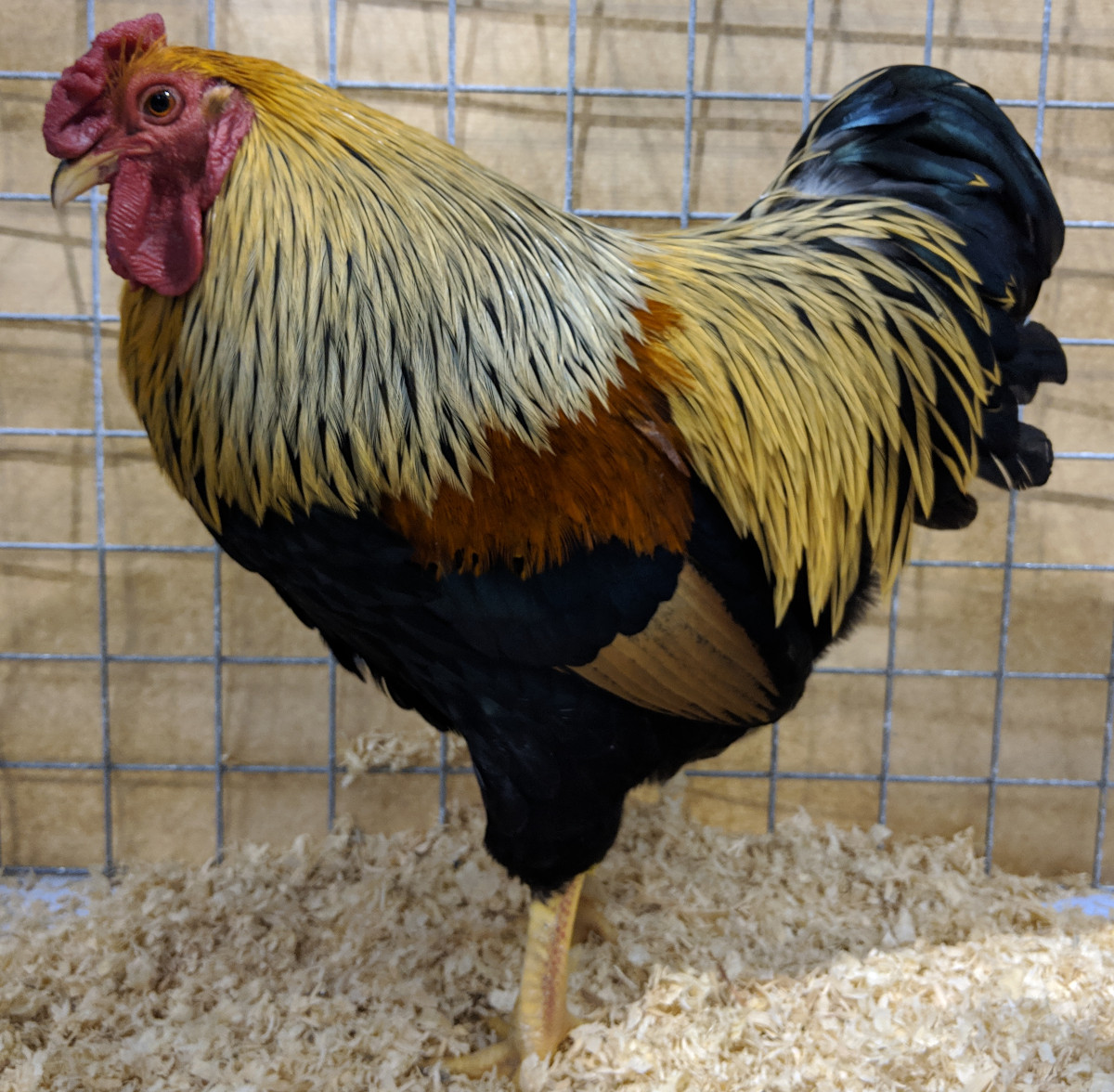
Defects include chickens that are:
- Blind in 1 eye,
- Are the wrong weight,
- Have the wrong colour eye for the breed,
- Have a split tail,
- Are missing toenails or spurs.
Some minor defects can be treated and manipulated to disguise them somewhat.
What makes a show hen?
Select hens of good size and weight, it is more difficult to adjust the weight of hen than a cockerel before the show.
Below: A show quality Light Sussex bantam hen.
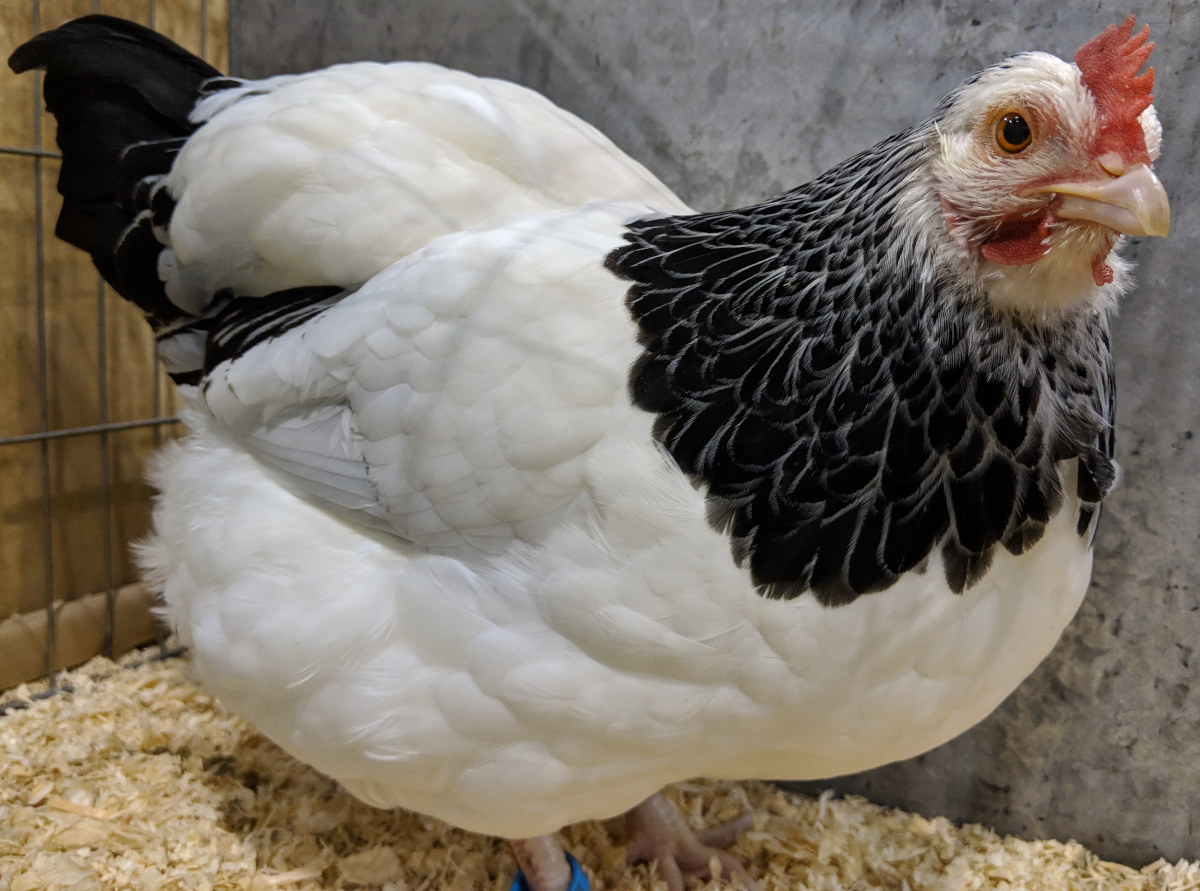
Disqualifications in both sexes include:
- Slipped or split wings,
- Vulture hocks,
- Complete blindness,
- Side sprigs, lopped, split or wrong type of comb for the breed,
- Beak malformed,
- wry neck or crooked back,
- Split, squirrel tail (for most breeds) or wry tail,
- Stub feathers on shanks,
- Multiple spurs,
- Bow legs, crooked toes, wrong number of toes, webbed feet or duck foot,
- Crooked, malformed or dented sternum.
Try to avoid excessively fluffy breeds, the vent feathers can become heavily soiled.
